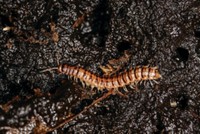Advertisement
Grab your lab coat. Let's get started
Welcome!
Welcome!
Create an account below to get 6 C&EN articles per month, receive newsletters and more - all free.
It seems this is your first time logging in online. Please enter the following information to continue.
As an ACS member you automatically get access to this site. All we need is few more details to create your reading experience.
Not you? Sign in with a different account.
Not you? Sign in with a different account.
ERROR 1
ERROR 1
ERROR 2
ERROR 2
ERROR 2
ERROR 2
ERROR 2
Password and Confirm password must match.
If you have an ACS member number, please enter it here so we can link this account to your membership. (optional)
ERROR 2
ACS values your privacy. By submitting your information, you are gaining access to C&EN and subscribing to our weekly newsletter. We use the information you provide to make your reading experience better, and we will never sell your data to third party members.
Biological Chemistry
Invasive Millipede Harbors Speedy Catalyst
Biotechnology: A millipede enzyme makes valuable chiral building blocks for pharmaceuticals faster than its industrial counterparts
by Sarah Everts
August 11, 2015

Stinky millipedes that swarm into houses at night in Japan may hold the key to speedy synthesis of important chiral molecules useful for making pharmaceuticals, agrochemicals, and other chemical products.
A team of researchers led by Yasuhisa Asano at Toyama Prefectural University, in Japan, found that Chamberlinius hualienensis, a millipede originally from Taiwan that invaded Japan in the 1980s, produces an enzyme called hydroxynitrile lyase that is much faster at producing enantiometrically pure (R)-mandelonitrile than versions of the protein used in industry (Proc. Nat. Acad. Sci. U.S.A. 2015, DOI: 10.1073/pnas.1508311112).
In millipedes, the enzyme produces smelly hydrogen cyanide from cyanohydrins to serve as a chemical weapon. But, Asano says, industrial chemists run the enzymatic reaction in reverse to make cyanohydrins to produce bulk chemicals, such as acrylamide, as well as fine chemicals, such as clopidogrel, a platelet aggregation inhibitor.
Researchers have studied hydroxynitrile lyases for about a century, typically sourcing them from bacteria and plants. However, the millipede enzyme is “by far the fastest,” comments Anton Glieder, a researcher at Graz Technical University, in Austria. Additionally, the highly specific production of (R)-mandelonitrile—with 99% enantiometric excess—is “really astonishing.” Industrial researchers will certainly want to consider the millipede enzyme for use in their factories, Glieder adds.
Initially, Asano’s team travelled to areas in Japan where the millipede had invaded to collect about 30 kg of the insects over five years. So that other scientists don’t have to harvest the millipede to extract the enzyme, the team has since produced a gene for the protein that can be expressed in yeast, Asano says. They’ve also studied the enzyme’s amino acid sequence and recently solved its X-ray structure, to be published soon, finding that the enzyme is unlike any known hydroxynitrile lyase discovered to date.
Millipedes have long been neglected by chemists, Asano says. These animals could be a valuable—if creepy-crawly—resource for finding other promising biocatalysts for use in industrial synthesis.





Join the conversation
Contact the reporter
Submit a Letter to the Editor for publication
Engage with us on Twitter